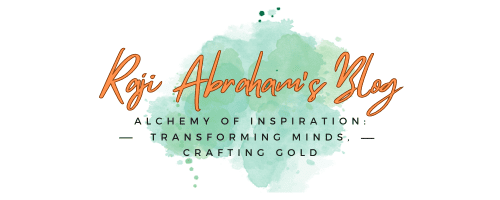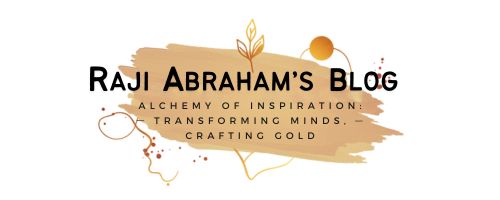The podcast above is generated using Notebook LM to stimulate additional thoughts in the reader’s mind.
Product development is where the magic happens! It’s where dreams take shape and become real-world solutions that can change lives. Think of it as an epic adventure, a rollercoaster ride of creativity, strategy, and technical wizardry. Every step, from that initial spark of an idea to the grand unveiling, is packed with ‘aha!’ moments, chances to learn and grow, and the sheer thrill of conquering challenges.
But hold on tight! This ride can get wild. Managing product development is like walking a tightrope while juggling flaming torches. You’ve got stakeholders on one side, shouting about deadlines and budgets, and customers on the other, demanding unique products that anticipate their every need. It takes serious communication skills, teamwork, and adapting on the fly to keep everyone happy.
Picture a team of talented acrobats from different disciplines – design, engineering, marketing, and business strategy – all working together perfectly. That’s what successful product development looks like. But just like in a high-flying circus act, there are bound to be surprises. Market trends shift like quicksand, technology evolves at lightning speed, and unexpected obstacles pop up out of nowhere. That’s what makes this whole thing so rewarding! Every hurdle you clear brings you closer to a product that genuinely sings and dances in the marketplace.
In the heady days of the Dot Com boom at the dawn of the new millennium, I helmed product development. I confronted a singular, daunting obstacle: earning the unwavering support of our stakeholders. Many in that eclectic group did not possess deep technical know-how in the arena we were forging into. Whenever I unveiled the product roadmap, it invariably sparked the same refrain: “Why this feature?” Let me tell you about an approach I employed to tame this wild beast during this time. I call it the “Feature Fiesta,” it’s all about categorizing features into five distinct flavors to help stakeholders understand their importance.
Imagine you’re trying to solve a transportation problem: getting people from one place to another quickly and affordably. One way to tackle this is by using an internal combustion engine to power a vehicle—an idea Carl Benz brought to life back in 1885. In my discussion, I’ll use this analogy of moving people from point A to point B to explain different feature categories.
 Type A: The Cornerstones – These are the essentials, the bedrock of your product. Imagine building a car without wheels – it just wouldn’t work! Cornerstone features are non-negotiable, just like those trusty wheels.
Type A: The Cornerstones – These are the essentials, the bedrock of your product. Imagine building a car without wheels – it just wouldn’t work! Cornerstone features are non-negotiable, just like those trusty wheels.
 Type B: The Pathfinders – These features are like the roads your car needs to travel on. They’re essential for your chosen design, even if they weren’t part of the original problem you set out to solve. For example, if you’re building a gas-powered car, you’ll need gas stations along the way. Pathfinder features guide your product towards success.
Type B: The Pathfinders – These features are like the roads your car needs to travel on. They’re essential for your chosen design, even if they weren’t part of the original problem you set out to solve. For example, if you’re building a gas-powered car, you’ll need gas stations along the way. Pathfinder features guide your product towards success.
 Type C: The Chameleons – These features adapt to different environments. Like windshield wipers in the rain or headlights at night, they’re essential in certain situations but not always necessary. Chameleon features give you flexibility – you can launch your product with or without them, depending on the circumstances.
Type C: The Chameleons – These features adapt to different environments. Like windshield wipers in the rain or headlights at night, they’re essential in certain situations but not always necessary. Chameleon features give you flexibility – you can launch your product with or without them, depending on the circumstances.
 Type D: The Cherries – These bells and whistles make your product shine. Think cruise control, a killer sound system, or any feature that adds extra oomph or sets you apart from the competition. Cherry features are your secret weapon for delighting customers or giving you a competitive advantage.
Type D: The Cherries – These bells and whistles make your product shine. Think cruise control, a killer sound system, or any feature that adds extra oomph or sets you apart from the competition. Cherry features are your secret weapon for delighting customers or giving you a competitive advantage.
 Type E: The Guardians – These features are like the seatbelts and airbags in your car – they keep everyone safe and ensure you comply with the rules. Guardians are essential for navigating the legal and regulatory landscape.
Type E: The Guardians – These features are like the seatbelts and airbags in your car – they keep everyone safe and ensure you comply with the rules. Guardians are essential for navigating the legal and regulatory landscape.
This Feature Fiesta framework makes it much easier to have meaningful conversations about which features to prioritize and why. It’s not always a perfect system, but it’s a powerful tool for aligning everyone on the journey. I introduced this concept to several organizations, and they were all open to using this framework in their product development narrative.
Ultimately, product development is a testament to human ingenuity. It’s where creativity and collaboration collide to transform bold ideas into something real, something that matters. It’s a wild ride, but with the right tools and a fearless spirit, you can turn those challenges into triumphs and create products that inspire, delight, and make the world a better place – all while keeping the cash registers ringing!



I found this article so compelling and insightful!
The website is well-maintained and filled with
valuable resources.